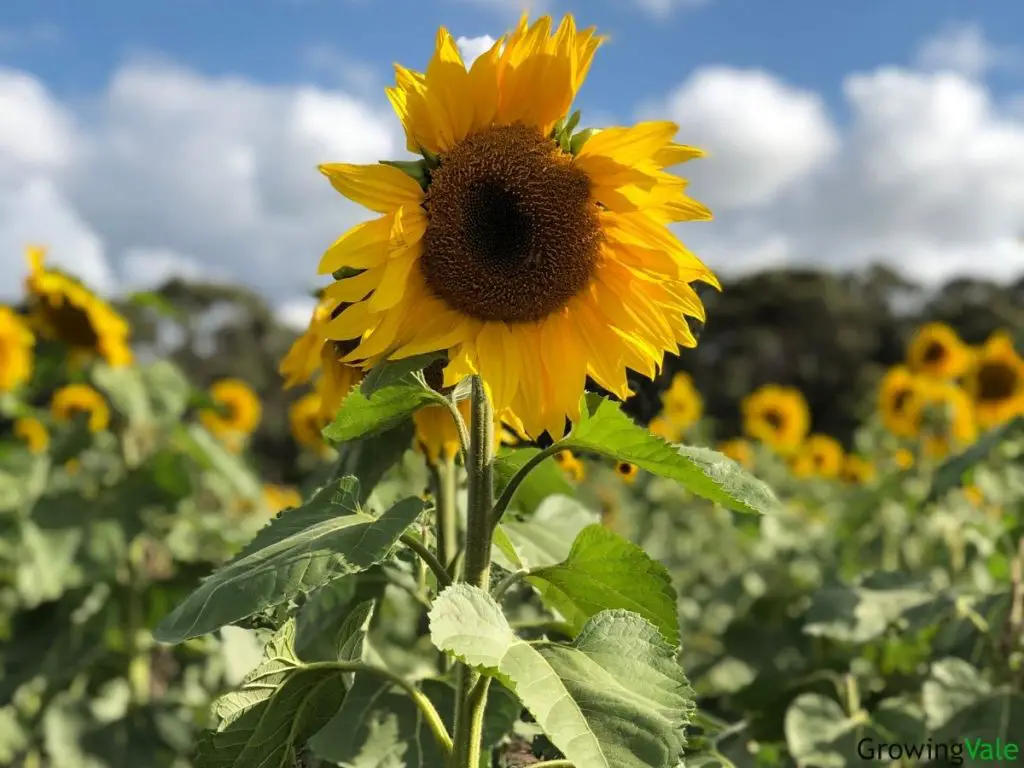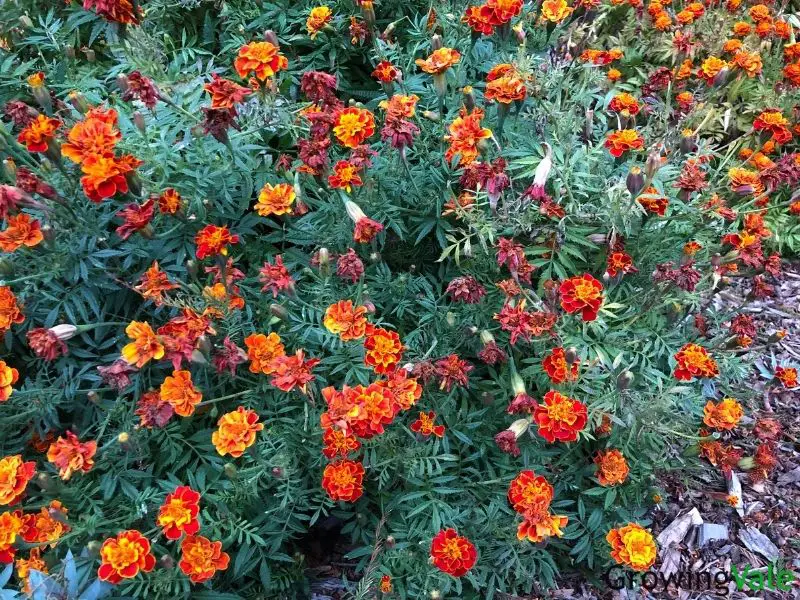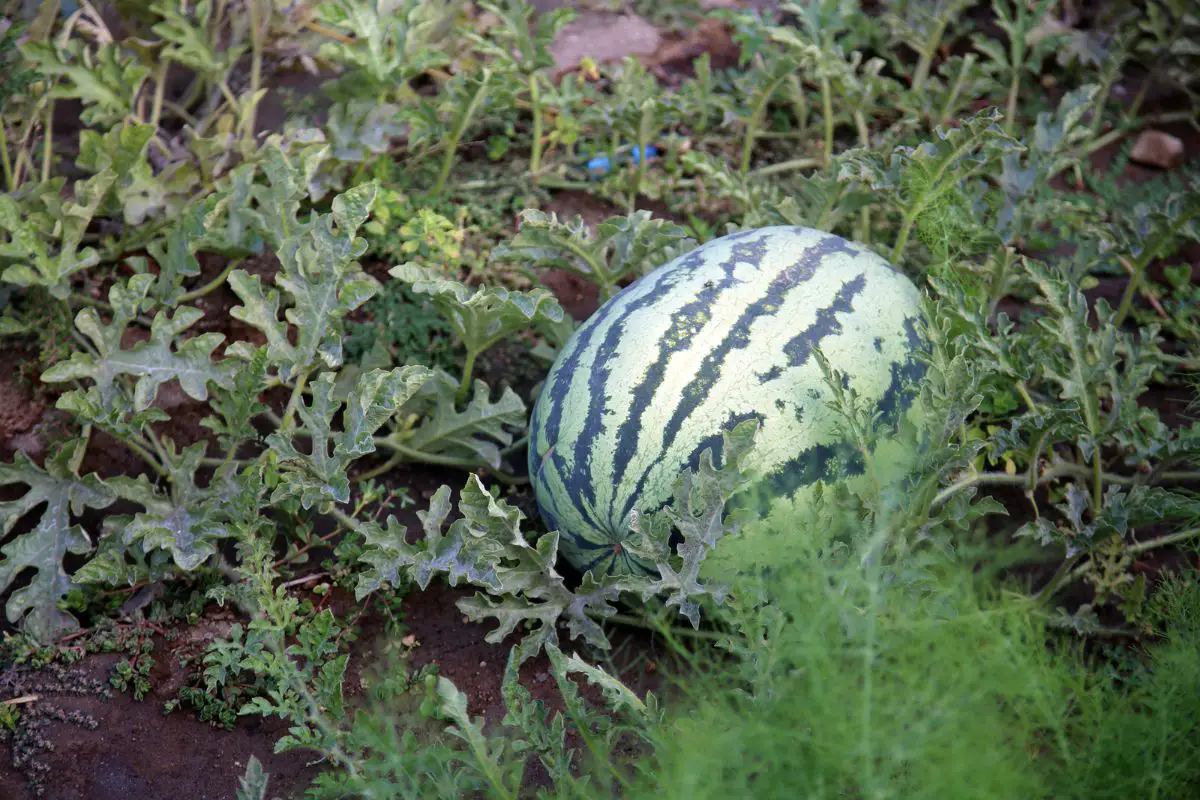Cultivated for their incredibly juicy fruits, watermelon plants are rewarding and fun to grow. Dedicated planters will find that fruit production is worth the time and effort, especially if they reap these fantastic summertime treats. Able to weigh several kilograms, watermelons are some of the world’s largest fruits.
Due to their size and weight, it’s hard to believe that watermelons arise from seemingly delicate vines. Scientifically referred to as Citrullus lanatus, watermelon vines belong to the Cucurbitaceae family of gourds. Due to the global demand for their fruits, they now come in more than a thousand varieties!
Watermelon plants grow best in relatively humid tropical to subtropical areas, where warm temperatures, lots of sunlight, and moist conditions support their needs during the fruiting stage.
To produce fruit, the vines need to be rooted in soils with temperatures of 70F or more. Heavy feeders, they need plenty of room to roam and spread.
The need for space, high concentrations of nutrients, and consistent moisture can make watermelon tricky to grow alongside other flowering plants.
Fortunately, there are a handful of low-maintenance companion plants that can complement watermelons as they deter pests and attract beneficial insects. These include squash, beans, corn, and more!
Best Crops to Grow Next to Watermelon Plants
Good companion plants for watermelon plants share their basic requirements while leaving room for their expansion.
These crops, which are well suited for a vegetable garden, tend to be fast growing plants. Many of them naturally attract pollinators while fending off some of the most troublesome pests.
Make sure to leave ample growing space for the companion plants below:
Corn
When it comes to what to plant with watermelon, corn is one of the most ideal companion plants for watermelons for a handful of reasons.
First, this remarkably versatile plant comes in dozens of varieties and is generally a cash crop wherever it is grown. Second, its sturdy and upright form can serve as a natural trellis for watermelon, allowing the vines to sprawl and stay off the ground.
Although corn is generally a heavy feeder, its taproots collect nutrients from the deeper layers of substrate, leaving the topsoil nutrients for the shallower watermelon roots. Moreover, corn is one of the best watermelon companion plants because it naturally deters pests. It emits dimethyl trisulfide, a chemical that repels various types of worms.
Beans
The best types of beans to grow well with watermelons include pole beans and bush beans. The first, which requires a trellis, has a high annual yield and requires a high amount of moisture and organic matter. The second is able to maintain its standing form without the help of a trellis.
Plant watermelons between these types of beans to increase the nitrogen concentration of the substrates. Beans can typically fix nitrogen, so they can actively enrich the soil’s fertility. Their presence should improve the fruiting rate of watermelons.
As a bonus, beans produce flavonoids, which deter troublesome pests like cucumber beetles and squash bugs.
Nasturtiums (Tropaeolum spp.)
Nasturtiums are some of the best companion plants for crops because they attract hordes of pollinators. The presence of hoverflies, butterflies, and bees should increase crop yield by ensuring that their watermelon flowers are pollinated. These annual flowering plants are easy to cultivate and shouldn’t take up too much vegetable garden space.
Many other plants benefit from the presence of nasturtiums because of their peppery scent and flavor. The scent is great for deterring pests, including many aphid species, squash bugs, and other harmful insects.
Sunflowers

Sunflowers are great watermelon companion plants because they attract pollinators and beneficial insects. These beautiful crops, which are globally valued for their oils, seeds, and attractive blooms, thrive best under full sun. Their showy flowers, which can grow tall, can add just the right amount of color and interest to your vegetable patch.
Companion planting with sunflowers can improve your garden’s overall health and soil structure. The deep roots of these flowering herbs can improve the drainage properties of compact substrates. They also produce chemicals that can prevent unwanted weeds from developing into extensive ground cover plants.
Radishes
Radishes are great watermelon companions because their deep root systems improve the water retention capacity of the substrate. They are also nitrogen-rich, which means they can enhance the soil’s nutrient profile. The increased access to moisture and nutrients should keep your watermelons productive all throughout their growth season.
Plant watermelon next to well-established stands of radishes to prevent pests from attacking them. The strong smell of radishes can help keep bugs like cucumber beetles away from developing fruits and tender vines.
Squash
Squash is a fine companion plant for watermelons because it naturally produces a pest repellent compound called cucurbitacin. Toxic to insect pests like squash bugs and cucumber beetles, both of which can harm watermelon plants and other crops of the gourd family, this natural compound can reduce the need for chemical pest control.
Squash can be grown in close proximity to watermelons because they share many similar growth requirements. These great companions can increase one another’s yield and should improve the overall diversity of your garden’s pollinator profile.
Dill
Commonly used as a fragrant herb for cooking, dill is often grown as a companion plant for its attractiveness to predatory insects. Its umbel-shaped inflorescences attract hoverflies, lacewings, and ladybugs. These predate on various pests, including cabbage worms, spider mites, thrips, and many aphid species.
Companion planting with dill should generally improve your vegetable garden’s soil conditions and reduce pests in a sustainable manner. Just make sure to keep your dill in good shape so that it can flourish, without attracting its own pests, through the growing season.
Marigold

Marigold can be a fantastic watermelon companion because of its pest-repellent properties, its low-maintenance requirements, and its natural beauty. Its vivid, yellow to red-orange blooms are great for attracting pollinators and luring them toward watermelon blooms.
Marigold roots produce chemicals that naturally repel nematodes, many of which can wreak havoc on watermelon roots. Ideally, you can dedicate a bed for marigolds and a separate bed for watermelon and other companion plants. This way, you can ensure that all plants receive the right amount of soil nutrients and sun exposure.
Landscaping Ideas with Watermelon Vines
Growing watermelon with the companion plants listed above should help increase crop yield while reducing the need for chemical insecticides. Watermelon can be grown alongside other crops in a raised bed garden. This should ensure that a variety of plants is afforded proper drainage in a small space.
Watermelon can also be used as a border plant around a vegetable garden. Its vines should naturally use upright plants as a trellis. As it intertwines with other crops, it can benefit from shared pollinators.
If you’d like to create a dedicated plot for watermelons, consider building a trellis or arbor garden with beneficial flowers rooted along the base of each trellis.
Worst Crops for Companion Planting with Watermelon
The worst watermelon companion planting ideas are those with incompatible growth requirements and a tendency to attract pests. These plants should be situated away from vegetable gardens.
Tall perennials that provide too much shade, have aggressive root systems, or compromise air circulation should also be avoided.
Though the crops below are generally desirable, they should not be planted next to watermelons because they attract aphids:
- Zucchini
- Roses
- Cucumbers
- Cabbage
- Broccoli
Other poor companion plants for watermelons include members of the nightshade family (e.g., peppers and tomatoes), fennel, cacti and succulents, large shrubs, and trees that may cast shade on the entire vegetable plot.
*image by mikeledray/depositphotos

